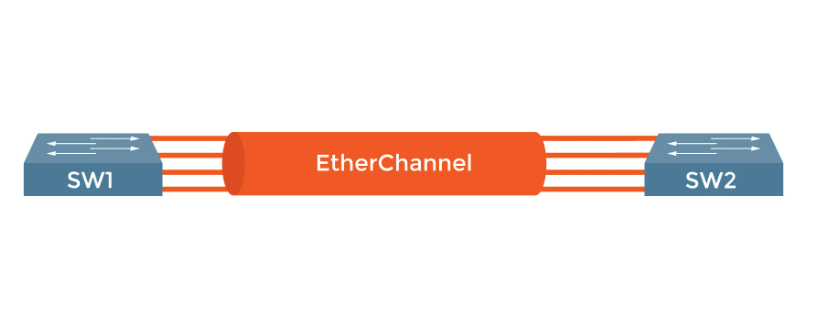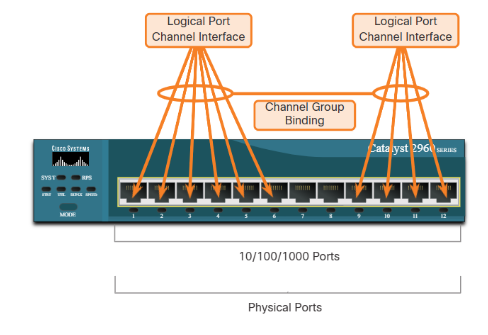What is EtherChannel?
Link Aggregation Technology
EtherChannel is a networking protocol developed by Cisco that allows you to combine multiple physical Ethernet links into one logical link. Instead of just relying on one cable between two switches or a switch and another device, EtherChannel lets you group multiple cables together so they function as a single high-bandwidth connection (9tut). This provides increased performance, redundancy, and easier management. EtherChannel is primarily used in LAN environments where high-speed and reliable communication between network devices is essential.
Why Use It?
One of the main reasons to use EtherChannel is to increase bandwidth. Rather than upgrading to a faster single link, you can simply combine existing Ethernet links. For example, four 1 Gbps links can act as a single 4 Gbps connection. This aggregation allows data to flow more efficiently. Another important benefit is redundancy. If one of the physical cables in the bundle fails, the remaining links can still carry traffic, keeping the network operational without interuption. This makes EtherChannel a valuable tool for improving fault tolerance in corporate networks. In addition to performance and redundancy, EtherChannel simplifies network management. The grouped links are treated as one logical interface, which means configurations like VLANs and trunking apply to the entire bundle. This makes network setup and maintenance more efficient. Overall, EtherChannel is a simple yet powerful way to strengthen network reliability and capacity.
Relationship to Spanning Tree Protocol (STP)
EtherChannel was developed in part as a solution to a limitation caused by Spanning Tree Protocol (STP). STP is also a layer 2 protocol that prevents loops (redundant paths that cause data to circulate endlessly, leading to broadcast storms and network failure) by identifying redundant paths and blocking all but one active link between switches (StudyCCNA.com). While this is essential for network stability and safety, it means that any extra physical links between devices are left unused - wasting potential bandwidth. EtherChannel was introduced to overcome this limitation. By bunding multiple physical Ethernet links into one logical connection, EtherChannel allows all of the links to be active and carry traffic, while still appearing as a single link to STP. This way, STP doesn't block the extra links, and the network gains both higher bandwidth and redundancy without introducing loops. EtherChannel and STP work together to provide efficient, reliable layer 2 communication.

